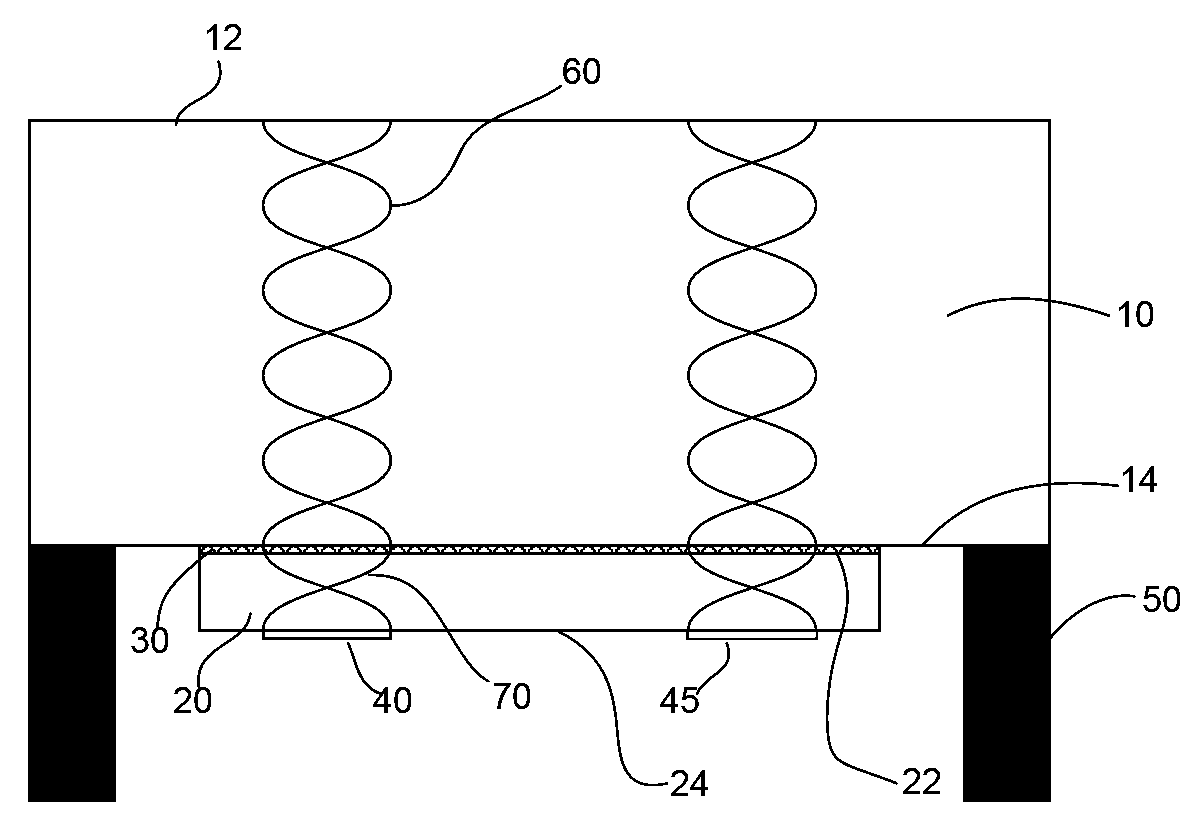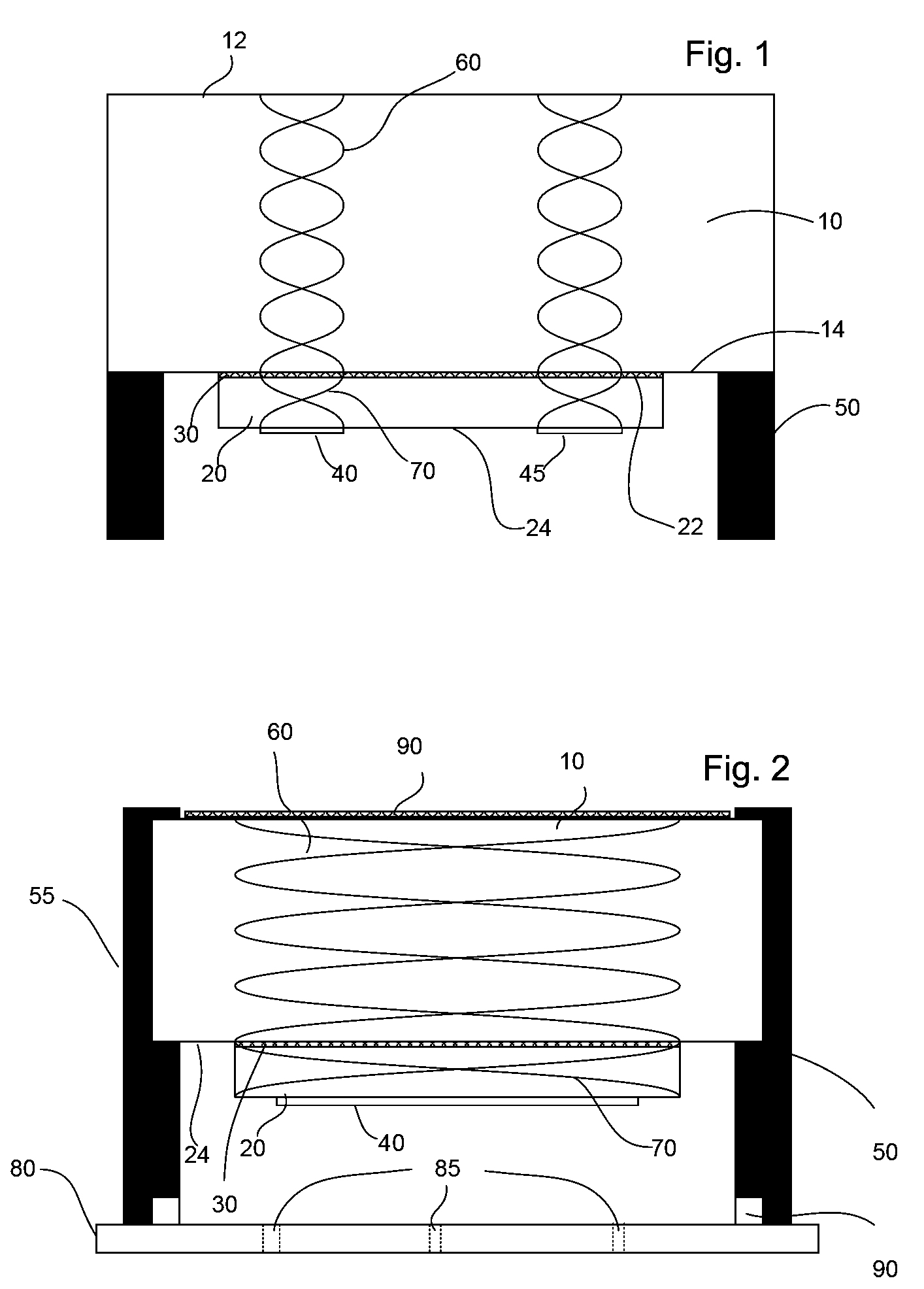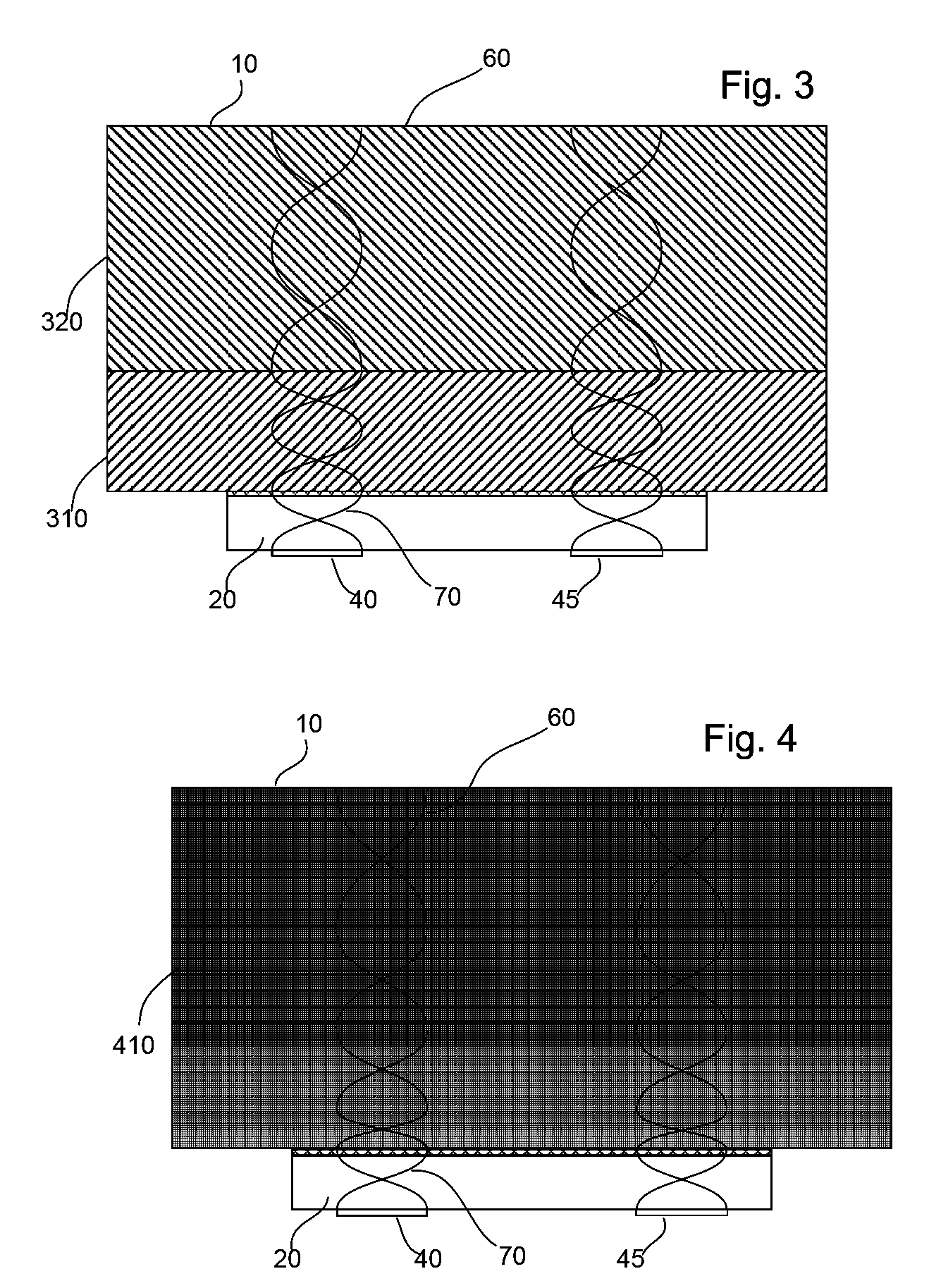Asymmetric Composite Acoustic Wave Sensor
a composite acoustic wave and sensor technology, applied in piezoelectric/electrostrictive/magnetostrictive devices, piezoelectric/electrostriction/magnetostriction machines, electrical transducers, etc., can solve problems such as noise signals and reading errors, corrosion or even explosive hazards, etc., to improve the responsiveness to physical measurements, improve coupling for operation, and high dynamic range
- Summary
- Abstract
- Description
- Claims
- Application Information
AI Technical Summary
Benefits of technology
Problems solved by technology
Method used
Image
Examples
Embodiment Construction
[0035]The following is a description of exemplary preferred embodiments and several modifications thereof. The description provided comes by way of illustrative example only, and the skilled in the art will recognize that many other variations are viable and equivalent to the disclose examples and embodiments. The invention extends to all such equivalents and obvious modifications.
[0036]FIG. 1 depicts a cutout of an acoustic device in accordance with the preferred embodiment of the invention. Protector plate 10 is coupled to a piezoelectric plate 20 so as to provide substantially continuous phase relationship at the interface therebetween. The protector plate has a driven face 14, and an opposing loaded face 12. When operational, the loaded face will be immersed in the environment to be sensed. The driven face 14 interfaces with a driving face 22 of the piezoelectric plate, and receives acoustic energy therefrom. The ideal boundary conditions between two rigidly bonded materials req...
PUM
 Login to View More
Login to View More Abstract
Description
Claims
Application Information
 Login to View More
Login to View More - R&D
- Intellectual Property
- Life Sciences
- Materials
- Tech Scout
- Unparalleled Data Quality
- Higher Quality Content
- 60% Fewer Hallucinations
Browse by: Latest US Patents, China's latest patents, Technical Efficacy Thesaurus, Application Domain, Technology Topic, Popular Technical Reports.
© 2025 PatSnap. All rights reserved.Legal|Privacy policy|Modern Slavery Act Transparency Statement|Sitemap|About US| Contact US: help@patsnap.com



